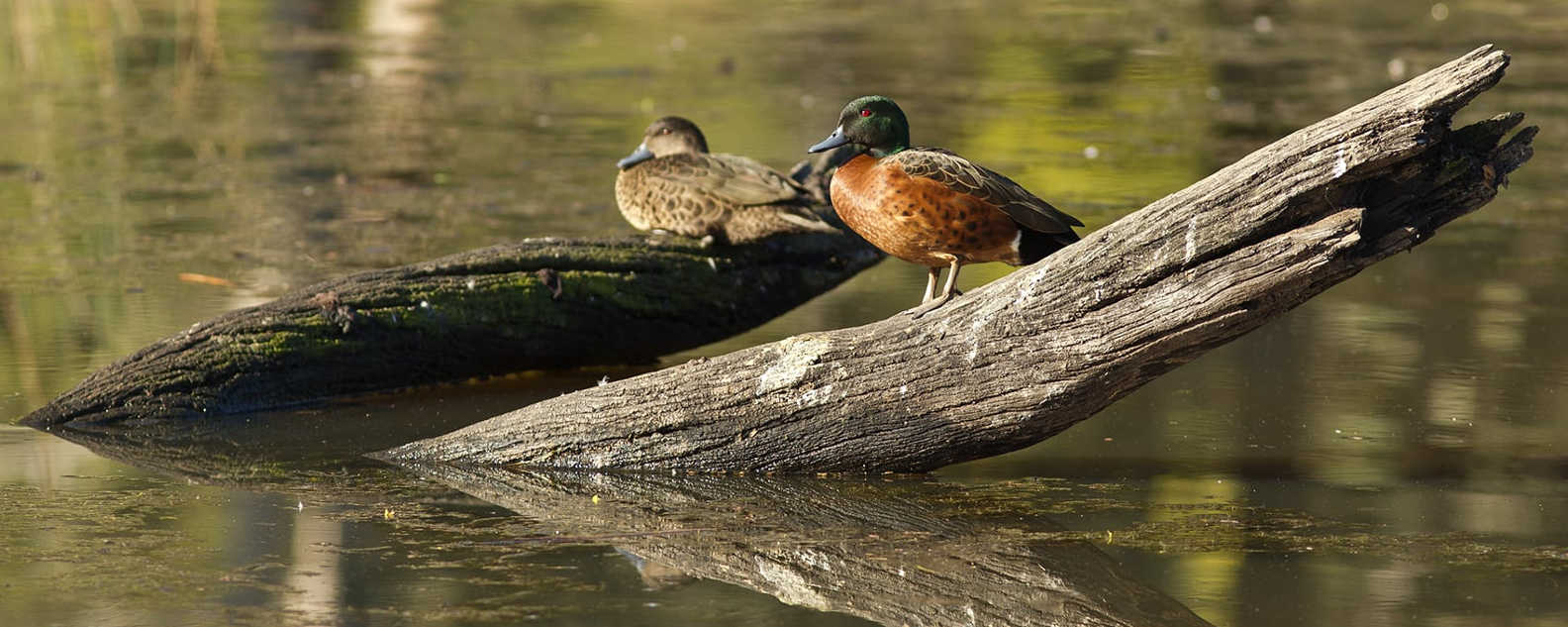Wildlife in the gardens
The Australian Botanic Garden Mount Annan has become increasingly valuable ‘greenspace’ in the fast growing urban area of south-west Sydney. The size of the site, and interesting variety of landscapes have made it an important fauna refuge.

Approximately 190 bird species have been recorded in the Garden, and visitors can take advantage of the lakes, woodlands and grasslands to see this wide range of bird life.
Mammals
Native mammals such as the wallaroo and swamp wallaby are commonly seen throughout the Garden in their natural woodland/grassland habitat.
Frogs, lizards, snakes and spiders
Some animals you may encounter:
- Peron’s tree frog Litoria peronii
- Eastern dwarf tree frog Litoria fallax
- Eastern water skink Eulamprus quoyii
- Eastern brown snake Pseudonaja textilis
- Funnel-web spider Atrax robustus
- Redback spider Latrodectus hasseltii
- Red-bellied black snake Pseudechis porphyriacus
- Eastern blue-tongued lizard Tiliqua scincoides subspecies scincoides
- Eastern bearded dragon Pogona barbata
- Eastern water dragon Physignathus lesueurii
- Lace monitor Varanus varius
Please be aware that all reptiles in the Garden are protected by law. Many of our native reptiles and spiders have poisonous bites. Do not attempt to handle them. If you think you have been bitten, seek help immediately - contact the Visitor Centre for first aid.
Birds
Bring your binoculars and be sure to visit the bird hide at Lake Nadungamba.
When trying to identify birds remember that male, female, juvenile and adult birds of the same species often have different colours and patterns.
Here are some of the common, and not so common, birds you may see around the Garden and their general size:
Water birds
- Clamorous reed-warbler
- Little pied cormorant
- Purple swamphen
- Australasian grebe
- Eurasian coot
- Pacific black duck
- Dusky moorhen
- White-faced heron
- Maned duck
- Masked lapwing
Ridgelines and open space habitat
- Wedge-tailed eagle (87-104 cm)
- Whistling kite (51-59 cm)
- Little eagle (45-55 cm)
- Brown goshawk (38-55 cm)
- Brown falcon (41-51 cm)
- Nankeen kestrel (30-35 cm)
- Rainbow bee-eater (23-28 cm)
- Dusky woodswallow (18 cm)
- Welcome swallow (14-15 cm)
- Fairy martin (12 cm)
Woodland habitat
- Australian raven (52 cm)
- Sulphur-crested cockatoo (45-52 cm)
- Tawny frogmouth (34-46 cm)
- Laughing kookaburra (45 cm)
- Southern boobook (30 cm)
- Grey butcherbird (24-30 cm)
- Eastern rosella (30 cm)
- Noisy miner (24-28 cm)
- Rainbow lorikeet (28 cm)
- Red-rumped parrot (27 cm)
- Fan-tailed cuckoo (25-28 cm)
- Sacred kingfisher (19-23 cm)
- Shining bronze-cuckoo (17-18 cm)
- White-plumed honeyeater (15-19 cm)
- Grey fantail (15-17 cm)
- Striated pardalote (9-11 cm)
- Yellow thornbill (10 cm)
- Spotted pardalote (8-9 cm)
- Weebill (8-9 cm)
Shrub habitat
- Common blackbird (25 cm)
- Lewins honeyeater (18-22 cm)
- Red-whiskered bulbul (20 cm)
- Golden whistler (17 cm)
- Rufous whistler (17 cm)
- Eastern yellow robin (15 cm)
- White-browed scrubwren (11-14 cm)
- Superb fairy-wren (14 cm)
- Silvereye (12 cm)
- Brown thornbill (10 cm)
Ground habitat
- Long-billed corella (38-41 cm)
- Little corella (36-39 cm) (Note: this is not commonly seen!)
- Australian magpie (36-44 cm)
- Galah (36 cm)
- Crested pigeon (31-35 cm)
- Common bronzewing (28-35 cm)
- Magpie lark (27 cm)
- Common myna (23-25 cm)
- Common starling (20-22 cm)
- Willie wagtail (19-21 cm)
- Brown quail (18-20 cm)
- Richards pipit (17-18 cm)
- European goldfinch (13 cm)
- Yellow-rumped thornbill (10-12 cm)
- Red-browed finch (11-12 cm)
- Double-barred finch (10-11 cm)
- Yellow-faced honeyeater (15-18 cm)
If you care for our birds, please don’t feed them.
Many of us love feeding ducks and other birds, but there are some good reasons why you shouldn’t. It upsets the delicate balance of nature and jeopardises the birds’ welfare.
- Handfeeding makes them aggressive and a nuisance.
- Feeding makes them lazy. Birds start to depend on being fed by humans and they become scavengers.
- Human food can kill birds. Our snack food often contains too much salt and sugar, and can be fatal to birds. Poor nutrition can lead to bone deformities, reduced ability to cope with cold weather and susceptibility to disease.